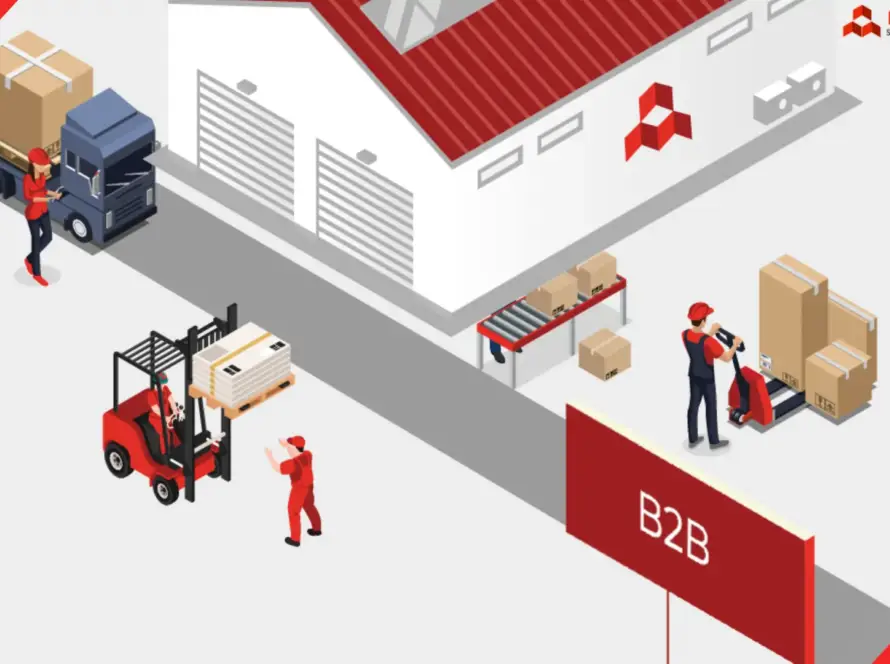7 Steps to Choose the Best 3PL Provider
In today’s dynamic marketplace, where supply chain management is paramount, selecting the right Third-Party Logistics (3PL) provider can make or break your business. A capable 3PL partner can streamline your logistics operations, enhance efficiency, and boost customer satisfaction. As Navata SCS, a leading 3PL provider, aims to deliver top-notch services tailored to your needs, it’s crucial to understand the steps involved in choosing the best partner. Let’s embark on this journey together, exploring the key considerations that will lead you to the ideal 3PL provider.

Define Your Logistics Requirements
Defining your logistics requirements is the foundational step in selecting the right Third-Party Logistics (3PL) provider for your business. Here’s a deeper dive into what it entails:
Assess Current Logistics Infrastructure: Begin by evaluating your existing logistics operations. Review your warehouse facilities, transportation network, inventory management systems, and order fulfillment processes.
Identify Pain Points: Pinpoint the pain points and challenges within your logistics operations. These could range from inventory stockouts, high transportation costs, inaccurate order fulfillment, to inefficient warehouse layouts.
Define Objectives: Clearly outline your logistics objectives and goals. What do you aim to achieve by partnering with a 3PL provider? Are you looking to reduce transportation lead times, improve inventory accuracy, expand into new markets, or enhance overall supply chain efficiency?
Specify Service Requirements: Determine the specific services you require from a 3PL provider. This may include warehousing, transportation management, freight forwarding, inventory optimization, order processing, reverse logistics, or value-added services such as kitting, labeling, or packaging.
Conduct Thorough Research
This process involves gathering and analyzing information from a variety of sources to build a comprehensive understanding of potential partners. Let’s delve deeper into how each resource can contribute to your research efforts:
Industry Publications: Industry publications, both online and offline, are valuable sources of information for staying updated on trends, developments, and insights within the logistics sector.
Online Reviews: Online reviews provide firsthand accounts of other companies’ experiences with 3PL providers. Platforms such as Google Reviews, Yelp, and industry-specific forums offer a wealth of information, including ratings, testimonials, and detailed feedback on service quality, reliability, and responsiveness.
Referrals from Trusted Sources: Word-of-mouth referrals from trusted industry contacts, colleagues, or business partners can be invaluable in identifying reputable 3PL providers.
Reputation and Track Record: When evaluating potential 3PL providers, pay close attention to their reputation and track record within the industry. Look for providers with a proven history of delivering high-quality services, meeting or exceeding client expectations, and maintaining strong relationships with their partners.
Client Testimonials: Client testimonials offer valuable insights into the real-world experiences of companies that have worked with a particular 3PL provider.
Evaluate Capabilities and Technology
When conducting thorough research to evaluate the capabilities and technology of prospective 3PL providers, it’s essential to delve deeper into various aspects to ensure alignment with your business needs.
First and foremost, examine the technological infrastructure of the 3PL provider. Look for evidence of state-of-the-art systems and software solutions designed to streamline logistics operations. This includes advanced inventory management systems capable of efficiently tracking and managing inventory levels, optimizing storage space, and facilitating timely order fulfillment.
Additionally, robust order processing systems should be in place to automate workflows, minimize errors, and enhance efficiency throughout the supply chain.
Real-time tracking capabilities are another crucial aspect to consider. A reputable 3PL provider should offer comprehensive visibility into the movement of goods at every stage of the supply chain, from warehousing to transportation and final delivery.
Evaluate Industry Expertise and Compliance
Industry expertise and compliance with regulatory standards are paramount when selecting a 3PL provider, especially in highly regulated sectors such as pharmaceuticals or food and beverage. Assess each provider’s industry-specific knowledge, certifications, and compliance with regulatory requirements such as FDA regulations, Good Distribution Practices (GDP), or ISO standards. A knowledgeable and compliant 3PL partner can ensure adherence to industry regulations and mitigate risks associated with non-compliance.
Example: Company ABC, a pharmaceutical manufacturer, partnered with a 3PL provider specializing in healthcare logistics and certified for Good Distribution Practices (GDP). This partnership facilitated seamless distribution of pharmaceutical products while ensuring compliance with stringent regulatory requirements.
Consider Flexibility and Scalability
Flexibility: This refers to the ability of the 3PL provider to adapt its services and operations according to the changing needs of your business. A flexible provider can accommodate sudden changes in demand, unexpected challenges, or alterations in your supply chain requirements without significant disruption.
Scalability: Scalability refers to the capacity of the 3PL provider to grow or shrink its services in line with the growth or contraction of your business. This includes the ability to handle increases or decreases in order volumes, storage needs, transportation requirements, and other logistics aspects without compromising efficiency or quality.
Flexibility and scalability are critical factors to consider when choosing a 3PL provider, as they enable businesses to adapt to changing market conditions, support growth initiatives, and optimize operational efficiency. By partnering with a flexible and scalable 3PL provider, businesses can gain a competitive edge and achieve long-term success in their logistics operations.
Assess Cost and Value Proposition
While cost is a significant consideration, it’s essential to assess the overall value proposition offered by each 3PL provider. Avoid basing your decision solely on pricing, as low-cost providers may compromise on service quality and reliability. Evaluate the total cost of ownership, including service levels, performance metrics, and potential cost savings through efficiency gains. A transparent pricing structure and a clear understanding of the value-added services provided by each provider are essential for making an informed decision.
Example: Company DEF, a consumer goods manufacturer, opted for a 3PL provider offering competitive pricing combined with value-added services such as reverse logistics and order customization. Despite initial higher costs, the enhanced service offerings resulted in cost savings through improved operational efficiency and customer satisfaction.
Conduct Site Visits and Due Diligence
Conducting site visits and due diligence is a critical step in selecting the right 3PL provider for your business. By physically visiting their warehouse facilities, you gain firsthand insights into their operational capabilities, infrastructure, and overall suitability to meet your logistics needs. Observing their equipment, processes, and quality control measures allows you to assess their efficiency, reliability, and adherence to industry standards. Meeting with key personnel provides an opportunity to discuss your specific requirements, address any concerns, and ensure alignment between your expectations and their capabilities.
Furthermore, conducting reference checks with existing clients offers valuable perspectives on the provider’s performance, reliability, and customer service. Learning from others’ experiences can help you anticipate potential issues and gauge the provider’s track record in delivering on promises.

Conclusion
Choosing the best 3PL provider is a strategic decision that can significantly impact your business’s success. By following these steps and partnering with a reputable provider like Navata SCS, you can unlock new levels of efficiency, reliability, and growth in your logistics operations. Remember, it’s not just about selecting a vendor; it’s about forging a collaborative partnership built on trust, innovation, and mutual success.
Thanks For Reading: 7 Steps to Choose the Best 3PL Provider for Your Business
Powered By 360Presence


1 Comment